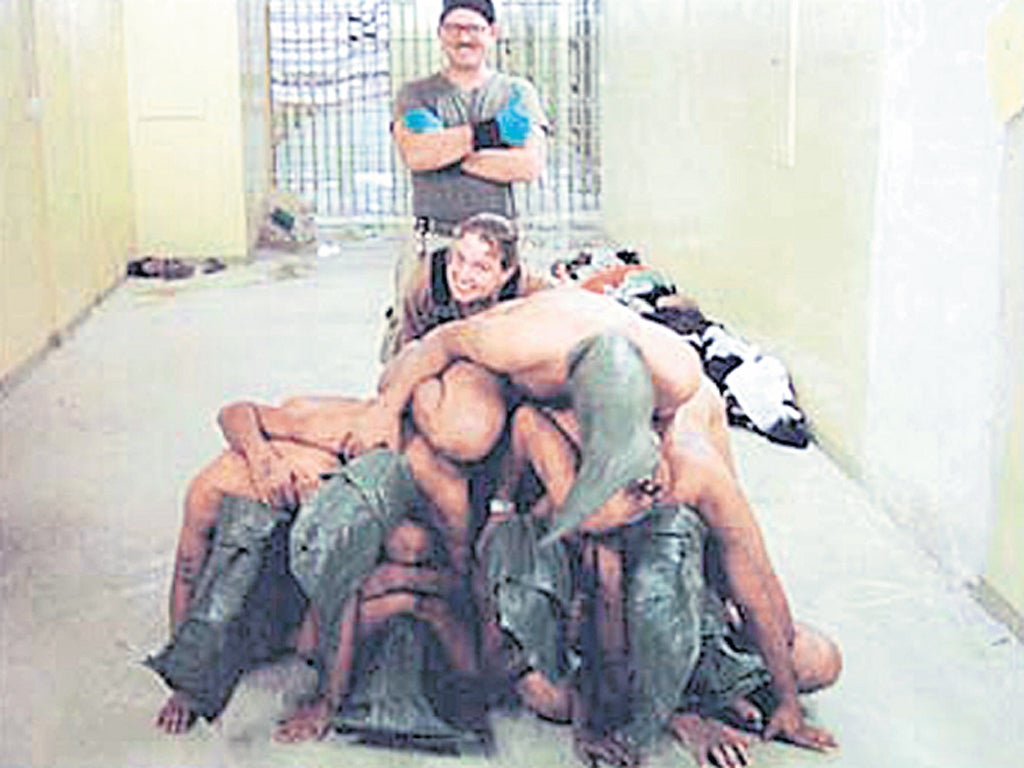Robert Fisk: Why torturers film their handiwork

When prisoners were brought to Saddam Hussein's intelligence service for interrogation, their torturers often videotaped the torment.
In the years after his downfall, I lectured around the world on the illegality and the immorality and the outrageous civilian slaughter of the invasion of Iraq by George W Bush and Lord Blair of Kut al-Amara (now, of course, Lord Blair of Isfahan). But I also carried with me extracts from those obscene videos – just in case the war's detractors forgot just what an iniquitous man Saddam actually was.
To spare the sensitivities of audiences, I cut hours of video down to a raw and terrifying minute and a half in which prisoners in underpants were whipped with wire by uniformed guards, made to crawl in sewers and were eventually piled in a bloody heap of the semi-dead. Blood was the colour. The only sounds were of the guards' abuse and the screaming and pleading of the captives. The videos were originally shot to shame the prisoners, but also, I suspect, for the sense of domination it gave the torturers.
The Abu Ghraib pictures – US torturers taking over the role of the Iraqi thugs in the very same prison in which many of the earlier Saddam videos were shot – had perhaps the same purpose. Lynndie England saw nothing particularly wrong with them. That was what Iraq was like, wasn't it? And we must forget, of course, that other American pictures from Abu Ghraib, which Obama the Good has decided we must not see, show the rape of Iraqi women and boys.
Janina Struk's new book on soldiers' private pictures of war, which I wrote about last week, contains some paragraphs about the new military art of filming, editing and producing war by video, the soldiers' very own version of Hollywood, in which real soldiers play themselves in real life and real Iraqis are cut down and killed in front of the camera. If the Vietnam-era US army could take photos of its own atrocities, American soldiers in Iraq have gone a step further.
On one website, Struk found a photograph "that showed five American marines smiling and fooling around for the camera beside a charred corpse", alongside the comment "Cooked Iraqi". A rotting corpse lying in the street carried the comment: "Bad day for this dude." A picture of a dead man with entrails and brains hanging from his body carried the following comment: "What every Iraqi should look like... Kill 'EM ALL and let ALLAH sort them out!" (An almost identical expression to that on a Jewish settler's assault rifle in an exhibition of Israeli soldiers' pictures from the occupied territories: "Kill 'em all, Let God sort 'em out.") In some videos Struk watched, pounding rock music accompanies images of US soldiers apparently firing at random Iraqis in Fallujah. But this isn't the only location for filmed atrocities. "One," writes Struk, "explicitly entitled 'Troops Throw Flashbang Grenade at Iraqi Farmer and His Sheep' ... shows precisely what its title suggests. A grenade is thrown from a moving vehicle at an elderly shepherd tending his flock of sheep grazing by the side of the road. It hits the target and explodes. There is laughter and the film ends... Another film, made up of four separate clips, shows someone with an automatic weapon randomly shooting from the back of a fast moving vehicle at approaching civilian cars. This film is thought to have been made by British contractors." Images of civilian cars shot up because they moved too close to US military vehicles provoked the comment: "I say blast the fuck outta those moron's [sic] that come up on the tail end of that marked vehicle."
The insurgents of Iraq have used the same system, albeit for more grimly doctrinal reasons. The videotaping of the mass shooting of captured police officers north of Baghdad (a colour version of 1942 Nazi images from the Ukraine and Belarus) and the beheading-execution of hostages was intended to dissuade Iraqis from collaborating, and of frightening the West into retreating from Iraq. Outside a mosque in Fallujah, I came across a video for sale which showed a man brought into a room and forced to lie face down on the floor. A knife is then placed beneath his chin and, as the man tries to control his pain, his head is slowly cut off.
I suspect this was film of a Russian soldier in Chechnya, the video on sale to teach Iraqi insurgent executioners how to butcher a human being. This, I think, was a "teaching tool", as our educationalists like to say. The guy will scream; there'll be a lot of blood. I noticed that later execution videos showed the murderers wearing rubber gloves. But do American videos, many obviously recorded by helmet-cameras, not contain a similar purpose? To desensitise soldiers to human suffering? Struk compares them with photographs of the 1914-18 Great War displayed at an anti-war exhibition in Berlin – until the Nazis shut it down in 1933.
And who of us has clean hands? In 1992-93, I was a reporter on a three-part film series called From Beirut to Bosnia, which showed terrible scenes of suffering from hospitals in Beirut, Cairo, Sarajevo and Gaza. In Gaza City, a Palestinian Hamas member was shot in the head by an Israeli soldier and we filmed him – with the permission of his family – as doctors tried to prevent him from swallowing his tongue as they operated. I don't know if he could see us or hear us. But he died as we filmed him. And, if conscious, the last thing he saw and heard on earth was the black and white clapperboard snapping shut in front of his face to the words: "Three and one on the end!"

Join our commenting forum
Join thought-provoking conversations, follow other Independent readers and see their replies
Comments